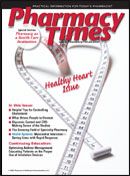Publication
Article
Pharmacy Times
Drug Diversion and Abuse: Identifying Legitimate Patients
Author(s):
Should patients be required to show identification when obtaining controlled substance prescriptions?
John Burke, commander of the Warren County, Ohio, drug task force and retired commander of the Cincinnati Police Pharmaceutical Diversion Squad, is a 40-year veteran of law enforcement. Cmdr Burke also is the current president of the National Association of Drug Diversion Investigators. For information, he can be reached by e-mail at linkEmail('burke','choice.net');, via the Web site www.rxdiversion.com, or by phone at 513-336-0070.

In this day and age, we hear aboutidentity theft nearly every day, withhorror stories of credit card fraud,bank accounts being compromised, andpersonal information being used forsome criminal enterprise's profits.
The 2008 election just ended, and thepotential for voter fraud was a big pieceof the news for many of the last weeksof the campaigns. Examples of voterfraud issues included the allegationsthat some folks may have registeredmore than once; the ruling in Ohio thatyou could use a park bench as yourresidence; and the lack of necessity insome areas to produce any identificationand yet still be allowed to exerciseone of the most important rights wehave in America—voting.
A recent article in the SarasotaHerald Tribune highlighted theSarasota County Commissioners whoare attempting to pass legislation thatwould require patients to show photoidentification when filling their controlledsubstance prescriptions. Thecommissioners feel that identificationis required when buying alcohol ortobacco, so why wouldn't it be requiredwhen people are obtaining potent pharmaceuticalsthat, when abused, canresult in overdose death?
The reporter interviewed a pain clinicemployee in Venice, Florida, whosaid he had hired an armed guard forthe office. The guard protects any painmedications that may be on the premisesand also escorts patients from theoffice to their vehicles to keep themfrom being robbed. The clinic also sellssafes to the patients to encourage themto lock up their medications at home.

Sarasota County led the state ofFlorida in fatal overdoses in 2007 with109. Prescription drugs were the leadingcause, according to this article.This prompted one couple, whose sonhad died of an overdose of pharmaceuticalsin 2006, to lobby the commissionersto pass a law requiring validphoto identification at the pharmacy.Sarasota County officials are not surethat they have the power to invoke thislegislation, but they are going to try.
Of course, this is not the first cryto require photo identification at thepharmacy counter in order to fill acontrolled substance prescription.Pharmacists are already doing this atthe counter when pseudoephedrine isneeded, because it is mandated by law.
Most statistics indicate that controlledsubstances make up less than10% of the overall prescriptions filledat any pharmacy. This proposal wouldstill require pharmacy personnel tocheck patients' identification, however,to verify that the correct person ispicking up the medication.
In order for an identification system tobe most effective, however, the employeewill need to make some record of theidentification (driver's license number,name, and date of birth, etc) so that iffraud has taken place there is a placeto start with an investigation. If drugseekers realize that if they show identificationbut no one makes a record of it,the process will soon be recognized asvirtually worthless.
We have discussed this matter inOhio, and its feasibility at the retailpharmacy is still being examined.Undoubtedly, pharmacy personnel cancheck identification and even recordthe information in some form like theydo with pseudoephedrine, but I estimatethat this volume would be muchlarger—possibly negatively impactingthe busy day at retail establishments.
Unquestionably, requiring the presentationof identification wouldreduce drug diversion, but I am interestedin your thoughts and opinionson this topic. I would appreciate yourcomments on this issue by sending mean e-mail at
linkEmail('burke','naddi.org');
.







